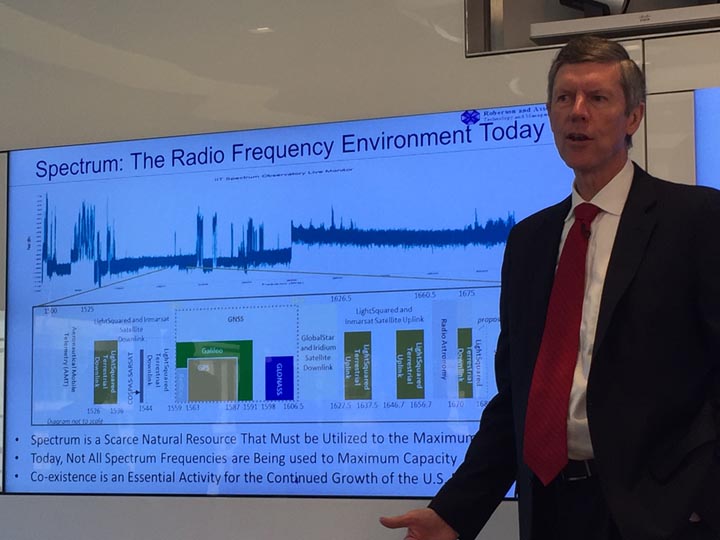Europe has set out to abolish the national patchwork for drone operations. Faced with different drone rules all over the continent, the legislative bodies of the European Union have been very busy lately.
On February 28, the European Aviation Safety Agency (EASA) announced that we are “one step closer to harmonized rules for safe drones operation in Europe.”
What’s changed?
The announcement is based on a number of regulations adopted over the course of 2018 and early 2019.
Setting the grounds essential for the development was the so-called Basic Regulation of EASA (Regulation (EU) 2018/1139 on “Common rules in the field of civil aviation and establishing a European Union Aviation Safety Agency”), adopted in July 2018. Despite the regulation’s title, the European Aviation Safety Agency was already established back in 2002 with Regulation (EC) No 1592/2002. It was, however, not before the recent amendment of the regulation in July 2018 that EASA’s rule making competence for “unmanned aircraft” was expanded to also cover unmanned aircraft with an operating mass of less than 150 kilograms.
This shift of competence from member states to the EU for practically all non-military aircraft indeed marks the basis for all future harmonization in law regarding unmanned aircraft within the Union. It provides the European Commission with the competence to propose a Delegated and an Implementing Regulation with further necessary regulatory details. Even military and other public activities may be placed under the uniform regulatory regime of the EU, if a member state makes use of the opt-in clause that also covers unmanned aircraft.
The EASA Committee, namely the committee for the application of common safety rules in the field of civil aviation, approved of the European Commission’s proposal for the Implementing Regulation also on February 28, 2019. This act regulates the operations of Unmanned Aircraft Systems (UAS) in Europe and the registration of drone operators and of certified drones.
The so-called Delegated Regulation was adopted by the European Commission on March 12, 2019 and then sent to the legislative bodies, the EU Parliament and the Council, which had two months to raise objections. It defines the technical requirements for drones brought to the EU market.
In lack of objections by the legislative bodies, it is expected that both acts will be published and will become gradually applicable within a year. By 2022, the transitional period will be completed and the legal framework for drones within the EU will be fully applicable.

What’s New?
The new legal acts are highly complex and introduce much detail for drone operations, in many ways exceeding the complexity of rules currently established on the member states’ level. Overarching is the principle of an operations-centric, risk-based approach. This means that basically three elements determine how an unmanned aircraft may be operated and what the operational requirements are:
(i) The technical capabilities and characteristics of the unmanned aircraft: e.g. its maximum take-off mass (MTOM); video and audio recording capabilities; guidance-, control- and safety systems; etc.;
(ii) the characteristics of the operation and operational environment, e.g. flight near or above people, residential areas, planned maximum above ground level of flight, transport of dangerous goods or people etc.; and
(iii) UAS operator’s responsibilities and remote pilot’s competencies.
As mentioned, the Basic Regulation expands the EU competence to all unmanned aircraft (UA), regardless of weight. It provides the basis and grants the legal competence for the adoption of the Implementing and Delegated Regulations, both accompanied by Annexes with more details on technical requirements. It’s to be supplemented by acceptable means of compliance (AMC) and guidance (material) currently available in a draft version.
It is also the instrument’s declared aim to establish three foundations for the upcoming development of airspace for urban UAS operations (“U-Space”), being registration, geo-awareness and remote identification.
Open, Specific or Satisfied
As a cornerstone of the EU UAS-rules, the Implementing Regulation defines the three main categories for UAS operations.
“OPEN”: At this point of the legislative process, only the “open” category has been finalized in great detail. Under it, unmanned aircraft may be operated without authorization. For this, all three operational aspects—technical/characteristics/operator—have to comply with the requirements specified for the “open” category. To not limit access to this category too much while still applying the operation-centric and risk-based approach, three sub-categories (A1 to A3) are in turn linked to five different classes of unmanned aircraft (C0 to C4), based on their MTOM and the three operational aspects. Only if the combined requirements are fulfilled can the operation be considered to fall in the “open” category and commence without further authorization. Otherwise, the operation will be subject to the “specific” or even the “certified” category.
“SPECIFIC”: Authorization under this category requires the UAS operator to undertake and submit an individual risk assessment of the planned operation to the competent local authority, unless the operation can be shown to comply with a “standard scenario.” Such a declaration of compliance with this scenario then merely needs to be verified by the local authority for completeness, and operations can start right away. While anxiously awaited by the drone community, the “standard” scenarios, which also include beyond visual line of sight operation (BVLOS), are currently not published in Appendix 1 to the Annex of the Implementing Regulations. Nevertheless, already interesting is the possibility to either receive authorizations for a number of operations specified in time and/or location(s) or to make declarations based on national “standard” scenarios that may fill the lacunae for as long as this level of scenario is not adopted on the European level. Also of interest for professional drone users is the possibility for legal entities to obtain a so-called “light UAS operator certificate” (LUC) for one-time authorizations for companies that regularly use UAS in specific scenarios.
“CERTIFIED”: Category rules have also not yet been provided in detail, but this third category can be expected to apply to heavyweight operations, typically in high-risk scenarios comparable to current manned aviation, including the transport of people and carriage of dangerous goods. Accordingly, it will not only require certification of the UAS but also of the UAS operator and, where applicable, the licensing of the remote pilot.
Registration Requirements
The Implementing Regulation also introduces registration requirements. All “UAS operators whose operation may present a risk to safety, security, privacy and protection of personal data or environment” are subject to registration. UAS operators have to register themselves—not the drone as such—when operating a UAV that weighs at least 250 grams or flies so fast that the kinetic impact energy exceeds 80 joules, or which is equipped with sensors able to capture data unless it complies with Directive 2009/48/EC on the safety of toys. The directive generally considers toys as products “designed or intended, whether or not exclusively, for use in play by children under 14 years of age.”
Accordingly, any professional UAS operator will have to undergo registration and display its registration number on every drone of its fleet. In case the UAS operator is a legal person, the principal place of business is the state of registration. Otherwise, the place of residence is decisive for determining the state of registry. A UAS operator can only be registered in one state at a time. Only drones that must be certified receive an individual registration mark in line with ICAO requirements.
The Implementing Regulation also determines a minimum age for remote pilots of 16 years, while class C0 drones that are toys according to the Directive, privately built drones of MTOM less than 250 grams and drones operated under supervision of a remote pilot aged 16 years and above may be operated without age limit. Applying the risk-based approach, member states are further allowed to lower the age limit by up to four years in the “open” category and up to two years for the “specific” category, in which case the operation of such lower-aged remote pilots is restricted to that member states’ territory. This concession to greater flexibility for member states may somewhat contravene the intended harmonization.
Commission Delegated Regulation
The Commission Delegated Regulation and its Annex are particularly relevant for manufacturers, importers and distributors of UAS who wish to introduce them onto the EU market. It lays down the requirements for UAS design and manufacturing. This includes conformity assessment with CE markings but also the detailed characteristics of the five classes of UAS subject to the open category, as addressed in the Regulation’s Annex. An unmanned aircraft introduced onto the EU market will have to be labeled according to its class requirements. The Annex also provides important information for professional operators and remote pilots about the drone characteristics, which are an important element for determining the boundaries for operation and thus the subcategory subject to the Implementing Regulation.
Commercial Operations and Drone Pilots
The Implementing Regulation holds the most relevant provisions for drone operators and remote pilots. While the class of a UAS has to be determined by the manufacturer, here the relevance of the Delegated Regulation mainly lies in referencing the exact technical details and characteristics of a drone class when determining operational requirements. Although definitions of key terms are spread out, the various Regulations, and their coherence, is preserved:
“UA” means any aircraft operating or designed to operate autonomously or to be piloted remotely without a pilot on board;
“UAS” means an unmanned aircraft and the equipment to control it remotely;
“UAS OPERATOR” means any legal or natural person operating or intending to operate one or more UAS.
According to recital (20) of the Implementing Regulation, “UAS operators and remote pilots should ensure that they are adequately informed about applicable Union and national rules relating to the intended operations, in particular with regard to safety, privacy, data protection, liability, insurance, security and environmental protection.” Accordingly, it is not sufficient to be aware of the requirements subject to air law and UAS regulations. Both the UAS operator and the individual remote pilot on a case by case basis need to be aware of all legal implications of the operation. With reference to privacy and data protection, the awareness even has to expand to the purpose of the operation and the (later) processing of the data as already intended. In principle, establishing the organizational set-up and the adequate procedures and limitations for the type of operation and risk involved is allocated to the UAS operator, whereas the remote pilot is responsible for ensuring compliance when starting a specific UAS operation.

Operator Ramifications
If an operator already has a drone, he should look out for the drone’s class identification label. The drone classification should be affixed to the drone itself, recognizable by the pictograms required under the Annex of the Delegated Regulation (see figure above). Such labeling shows that the drone may be used in the “open” category and, depending on the class number, also helps to determine the subcategory it may be operated under.
If the drone has no such identification label, possibly because it was acquired before the Regulation was applicable, the UAS operator should be able to determine the class himself by applying the drone’s technical specifications. At the end, the class identification only serves as an easy reference point for determining the drone-related element of the categorization. If the drone is operated beyond the limitations applicable to the specified class, these should have to take precedence for determining the category of operations.
Following classification, the characteristics of the intended operation have to be determined. These will further help to identify the categorization and subcategory applicable. Depending on the outcome, the competency requirements of the remote pilot can be defined. Operation of class C0 unmanned aircraft in subcategory A1 merely requires familiarization with the user’s manual of the UAS. Any other operation of UAS and classes require the remote pilot to pass online examinations whose complexity increases with number of the subcategory. For the “specific” category, the authority determines the remote pilot’s competency requirements.
As with the lack of standard scenarios, the pilot requirements for the “specific” category are yet unknown. For subcategory A1 of the Annex of the Implementing Regulation, there are 40 multiple choice questions on the subjects relevant to operations. For subcategory A2 and A3, the remote pilot also has to hold a certificate of remote pilot competency issued by the competent authority or by an entity recognized by the competent authority of the member state of registration of the UAS operator. This requires answering additional multiple-choice questions, self-practical training and ability to fulfil certain in-flight requirements. Especially the requirements for subcategory A3 are very extensive while still being subject to concretization by the member states.

Across Borders, Beyond Registration States
Given that no additional authorization is required for operations subject to the “open” category, cross-border operations within the EU complying with the requirements of the respective subcategory should also not require authorizations. According to the Annex of the Implementing Regulation, the capacity requirements are linked to the member state of registration of the UAS operator. As stated above, remote pilots that exceptionally benefit from a lowered minimum age are only then restricted to operations in this specific member state. This suggests a concept of mutual recognition in general. However, it does not excuse the remote pilot from familiarization with the local geographical and also legal requirements beyond air law. In practice, this aspect may still be a limiting factor for cross-border operations.
For operations subject to the “specific” category, the other EU member state is required to assess the operational authorization already granted by the member state of registration to the UAS operator and report back on the adequacy of the risk mitigation measures for the intended location. The UAS operator requires prior confirmation by the other member state. The Implementing Regulation suggests that such confirmation may only be refused if the mitigation measures contained in the authorization are not satisfactory or have not been updated for the intended location. Unfortunately, there is little guidance if and, in case, on what grounds a recognition of an existing authorization can be rejected and, in case, how such rejection may be challenged. It is difficult to conceive that a member state would recognize any authorization by another member state unless based on a standard scenario given that all national laws that may be affected by the operation have to be considered. However, if the intended operation is in line with a standard scenario, a mere declaration of compliance by the UAS operator is sufficient anyhow.
Third-Country Operators
Aside from intra-European drone operations, UAS operators from third countries may be interested in using their drones within the EU. For such cases the Delegated Regulation states that the Implementing Regulation fully applies. The competent authority for the third-country UAS operator shall be that of the first member state where the UAS operator intends to operate. In addition, the Delegated Regulation states that the competent authority for the operations within, to and out of the Union may recognize existing certificates on remote pilot competency. This, however, requires that (i) the third country asked for such recognition, (ii) the certificate of the remote pilot competency or the UAS operator’s certificate are valid documents of the state of issue and (iii) the European Commission, after consultation of EASA, has ensured that the requirements for issuance provide the same level of safety as the Delegated Regulation.
The LUC Certificate
The “light UAS operator certificate”—LUC—provides a convenient method for UAS operators to obtain a general authorization for operation scenarios under the “specific” category, which would otherwise be subject to individual authorizations. The LUC requires the presentation and upholding of a detailed management and organization structure within an undertaking, which needs to be precisely described in a LUC manual made available to all relevant personnel. Accordingly, the LUC is limited to legal persons. The LUC also has to contain the remote pilot’s capacity requirements applicable for the operation subject to the LUC.
A LUC is unlimited in duration, provided the scenarios are maintained. Otherwise, further approval by the competent authority for certain changes may be required. The LUC may not be transferred to another entity
Continued Validity of Existing Licenses
According to Article 21, authorizations granted to UAS operators, certificates of remote pilot competency and declarations made by UAS operators or equivalent documentation, issued on the basis of national law, shall remain valid until two years after the date of entry into force of the Implementing Regulation. This is expected this summer, so that the validity of recent documents would likely lapse in summer 2022. Until that date, member states are to convert existing documents in accordance with the Implementing Regulation. The transition period for operations conducted in the framework of model aircraft clubs and associations runs for three years from the Implementing Regulation’s entry into force, and therefore can be expected to lapse in summer 2023.
Since any conversion has to follow the requirements of the Implementing Regulation, only those national authorizations and declarations can be expected to survive beyond the applicable periods that already comply with the new rules. Otherwise, additional requirements would have to be fulfilled or the authorization or license fully renewed.
Continued Permission to Use Existing UAS
The Delegated Regulation with the requirements for classifications of UAS will directly be applicable in the member states without providing for a transition period. All UAS brought on the market following the Regulation’s entry into force expected in summer 2019 will already have to comply with these requirements. Anyone buying a drone after that date should therefore make sure that he is sold a model already compliant with the new Regulation.
Companies which are still operating “old drones” not in compliance with the new requirements will want to know if operation may be continued. The question only arises for “open” category operations, since operations in all other categories will be subject to specific authorizations requirements, anyhow. According to Article 20 of the Implementing Regulation, UAS types that do not comply with Delegated Regulation’s requirements and that are not privately built are allowed to continue operations when they have been placed on the market three years after the date of entry into force of the Delegated Regulation, when subject to subcategory A1 and MTOM less than 250 grams or subcategory A3 with MTOM less than 25 kilograms.
Harmonization Achieved?
Referencing the declaration on 28 February 2019, it can be summarized that indeed another great step towards harmonization of UAS operational rules in the EU has been made. The development has, however, not reached the finish line yet, and a number of issues still need to be successfully resolved for a “mission accomplished” verdict. Art. 56(8) of the Basic Regulation and recital (18) of the Implementing Regulation imply an opening for member states to lay down national rules covering public security, privacy protection or environmental concerns. Possibilities may range from prohibition to operational restrictions to use of equipment such as remote identification systems or geo awareness systems. Furthermore, many elements, such as the content of remote pilot competency requirements and the standards for the electronic registers to be created by member states, have to be defined. The complexity of these tasks should not be underestimated, not to mention the still unpublished standard scenarios that will form the backbone for the efficiency when applying the “specific” category. It is therefore not surprising that comments of industry stakeholders published on the Commission website support the overall aim of harmonization but also warn of national particularism that may yet contravene the effort. Analysis will continue concerning how the quite significant “white spots” in the framework of EU UAS regulations will be filled in the coming months.






